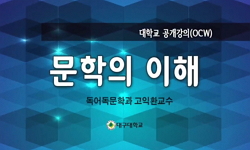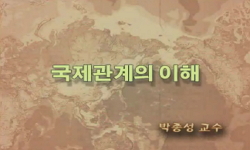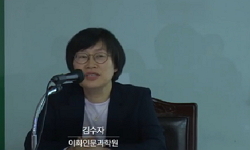남북한 문학사는 서술주체나 방법 등에서 적지 않은 차이를 보여준다. 특히 해방 이후를 대상으로 한 문학사 서술은 언어만 같을 뿐 서로 다른 민족(혹은 국가)의 문학사 서술이라고 해도 무...
http://chineseinput.net/에서 pinyin(병음)방식으로 중국어를 변환할 수 있습니다.
변환된 중국어를 복사하여 사용하시면 됩니다.
- 中文 을 입력하시려면 zhongwen을 입력하시고 space를누르시면됩니다.
- 北京 을 입력하시려면 beijing을 입력하시고 space를 누르시면 됩니다.

북한문학사 서술의 특징과 변모 양상 — ‘평화적 민주건설시기’(1945.8-1950.6)를 중심으로 = The Characteristics and the Aspect of Transformation of Narratives in the History of North Korean Literature - Focus on ‘the period of peaceful democracy construction’
한글로보기부가정보
국문 초록 (Abstract)
남북한 문학사는 서술주체나 방법 등에서 적지 않은 차이를 보여준다. 특히 해방 이후를 대상으로 한 문학사 서술은 언어만 같을 뿐 서로 다른 민족(혹은 국가)의 문학사 서술이라고 해도 무방할 만큼 공분모를 찾기 힘들다. 이 글은 해방이후 북한에서 출판된 여러 문학사에서 ‘평화적 민주건설시기’라고 명명한 1945년에서 한국전쟁까지의 시기를 어떻게 서술하고 있는지 살펴보도록 한다. ‘해방공간’, 혹은 ‘평화적민주건설시기’는 정치에 문학이 휩쓸릴 수밖에 없는 상황이었으며, 각각의 문학 단체는 정치현실과 밀접하게 관련되어 있었다. 그런 와중에도 좌익과 우익 모두 ‘민족문학건설’이란 거창한 슬로건을 내걸고 있었는데, 이때 ‘민족문학건설’이란 결국 새로운 국가 건설이라는 정치적인 과제에 직결된 것이 될 수밖에 없었다. 새로운 민족국가 건설을 위해 낡은 것들을 청산하고, 민중의 자기해방을 기도하며, 그것을 당대현실의 객관적 발전 과정의 추동력 위에서 형상화하는 것은 해방 후 남북한 문학 모두에게 공통의 과제였다.
구체적인 연구 대상은 해방 후 북한의 ‘사회과학원문학연구소’가 발간한 『조선문학통사-현대편』(1959), 『조선문학사 1945-1958』(1978), 『조선문학사』 10(1994) 등 세편의 문학사와 1986년 출판된 박종원·류만, 『조선문학개관』 2이다. 시기적으로 일정한 거리를 두고 출판된 각각의 문학사를 함께 검토해 봄으로써 시대 변화에 따라 서술태도나 대상작품의 선정과 평가 등이 어떻게 변화하였는지를 살펴보았다. 이러한 작업을 통해 북한문학사에서 어떠한 작품들이 문학사에 등재되고 탈락하였는지를 확인할 수 있었다. 더불어 2000년 연변대학 출판부가 발행한 『조선-당대문학사』에 대해서도 검토해보았다. 이른바 제3국에서 출판된 한국문학사인 셈인데 남한과 북한의 자료를 동시에 활용하면서 남북한 문학모두를 대상으로 한 문학사란 점에서 주목되는 텍스트이다.
본 연구가 해방 직후 문학에 대한 북한문학사의 관점과 서술 태도에 주목한 것은 이 시기에 대한 검토가 북한 문학의 향후 전개과정을 살피는데 중요한 토대가 될 수 있으리란 판단에서였다. 실제로 이 시기에 생산된 문학작품들은 북한문학의 핵심이라고 할 수 있는 수령형상의 창조, 미제국주의의 타도와 남조선 혁명, 노동계급의 찬양고취 등이 원형적으로 제시되어 있다고 해도 과언이 아니다. ‘평화적민주건설시기’를 정리한 북한문학사는 모두 소설보다 시 장르에 보다 많은 분량을 할애하고 있다. 이 시기 시문학이 왕성하게 창작된 이유는 ‘해방’이라는 특수한 상황과 연결하여 설명할 수 있다. 무엇보다 시 장르는 해방의 감격과 민주개혁에 대한 희망과 결의를 표현하는데 가장 효과적인 장르였으며, 효과적인 예술적 선전성을 획득하는데도 유용한 장르였다. 시가 비교적 문학적 소양이 부족한 사람도 쉽게 손댈 수 있는 양식이란 점도 많은 시인의 등장과 시편들의 생산을 가능하게 했다. 더하여 식민체제 아래에서는 볼 수 없었던 송가나 서정서사시, 서사시 등 새로운 양식들이 등장한 점도 이 시기의 주요한 특징 중 하나로 꼽을 수 있다.
다국어 초록 (Multilingual Abstract)
The history of North and South Korean Literature shows not inconsiderable difference in the subject of narrative, method, and etc. Especially, it is so difficult to find common aspects in narratives in the history of literature after the liberation, t...
The history of North and South Korean Literature shows not inconsiderable difference in the subject of narrative, method, and etc. Especially, it is so difficult to find common aspects in narratives in the history of literature after the liberation, though the language is simply the same, that it would be better to mention that the narratives have different ethnicity (or nationality). The paper will review how the period from 1945, which is called ‘the period of peaceful democracy construction’ in many publishings of literature history after the liberation, to the period of the Korean War is narrated. ‘The space of liberation’ or ‘the period of peaceful democracy construction’ was in a situation which literature could not help but become swept by politics, and each literature group was closely related to the political reality. Even among such period, the left and the right both showed a grandiose slogan of ‘the construction of ethnic literature’, and here, ‘the construction of ethnic literature’ could not help but eventually become directly related to the political task of constructing a new nation. For construction of a new ethnic nation, eliminating old things, praying for the people’s self liberation, and projecting such on the impetus of the objective development process in the reality at the time were the common task for both North and South Korean literatures after the liberation.
The detailed subject for the study regards to three history of literature books, 『The Complete History of Joseon Literature – Modern Days』 (1959), 『The History of Joseon Literature 1945-1958』 (1978) 『The History of Joseon Literature』 10 (1994), and etc published by North Korea’s ‘Social Science Center for Literature’ after the liberation, and also, 『Overview of Joseon Literature』 2 by Park Jong Won and Ryu Man and published in 1986. By reviewing each history of literature published in certain periodical distance, it was reviewed how the attitude of the narrator or selection and evaluation of the subject work, and etc according the change of age has been transformed. Through such work, it could be known which works were registered and dropped out in the North Korean history of literature. Besides, 『Joseon – History of Literature』 at the time published by the Yunbyun University in 2000 was also reviewed. It would be the so-called Korean history of literature published in the 3rd world, and the test gains attention from the point that it contains history of both North and South Korea while utilizing both data of the North and the South. The reason for the study to draw attention to the viewpoint and narrative attitude of North Korean history of literature regarding literature right after the liberation is because of the judgment that reviewing the period would become an important basis for reviewing the future process of North Korean literature. Actually, it would not be wrong to say that literature works produced during this period suggest the original form of the core of North Korean literature such as the creation of the image of the leadership, the overthrow of US empiricism and the revolution of South Joseon, inspiration of glorification of the labor class, and etc. All North Korean history of literature which arranged ‘the period of peaceful democracy construction’ allocates more pages in the poetry genre than novel. The reason for poetry being prosperous is can be explained by linking it to the special situation called ‘liberation’. Above all, the poetry genre was the most effective genre for expressing hope and determination regarding the sweetness of liberation and democratic reformation, and also, it was a useful genre for obtaining effective artistic propagation. The point that poetry has a form which even people with comparatively insufficient knowledge in literature can easily contact also enabled emergence and production of many poets and poems. Furthermore, the point th...
참고문헌 (Reference)
1 류만, "현대조선시문학연구-해방 후편" 사회과학출판사 1988
2 김윤식, "해방공간의 문학사론" 서울대출판부 1989
3 김희민, "해방 3년의 소설문학" 세계 1987
4 김윤식, "한국현대현실주의 소설 연구" 문학과지성사 1990
5 권영민, "한국현대문학사, 1945-1990" 민음사 1993
6 김열규, "한국문학사의 현실과 이상" 새문사 1996
7 홍용희, "통일시대의 북한문학" 국학자료원 2010
8 김은정, "천세봉 장편소설 연구-인물유형의 변화과정을 중심으로" 한국외국어대학교 2006
9 사회과학원문학연구소, "조선문학통사-현대편" 사회과학출판사 1959
10 사회과학원문학연구소, "조선문학사 1945-1958" 과학백과사전출판사 1978
1 류만, "현대조선시문학연구-해방 후편" 사회과학출판사 1988
2 김윤식, "해방공간의 문학사론" 서울대출판부 1989
3 김희민, "해방 3년의 소설문학" 세계 1987
4 김윤식, "한국현대현실주의 소설 연구" 문학과지성사 1990
5 권영민, "한국현대문학사, 1945-1990" 민음사 1993
6 김열규, "한국문학사의 현실과 이상" 새문사 1996
7 홍용희, "통일시대의 북한문학" 국학자료원 2010
8 김은정, "천세봉 장편소설 연구-인물유형의 변화과정을 중심으로" 한국외국어대학교 2006
9 사회과학원문학연구소, "조선문학통사-현대편" 사회과학출판사 1959
10 사회과학원문학연구소, "조선문학사 1945-1958" 과학백과사전출판사 1978
11 오정애, "조선문학사 10" 사회과학출판사 1994
12 안함광, "조선문학사" 교육도서출판사 1956
13 박종원, "조선문학개관 2" 사회과학출판사 1986
14 김병민, "조선-한국 당대문학사" 연변대학출판사 2000
15 신형기, "이야기된 역사" 삼인 2005
16 윤기덕, "수령형상문학" 문예출판사 1991
17 이병천, "북한학계의 한국근대사 논쟁" 창작과비평사 1989
18 민족문학사연구소, "북한의 우리문학사 인식" 창작과비평사 1991
19 이복규, "북한의 문학사 서술 양상" (9) : 1989
20 동국대 한국문학연구소, "북한의 문학과 문예이론" 동국대출판부 2003
21 권영민, "북한의 문학" 을유문화사 1989
22 오성호, "북한시의 사적 전개과정" 도서출판 경진 2010
23 김재용, "북한문학의 역사적 이해" 문학과지성사 1994
24 홍혜미, "북한문학을 이해하기 위한 시론-북한의 문학사 검토" 7 : 2001
25 이명재, "북한문학사의 특질과 그 평가, in 현대문학" 1997
26 채미화, "북한문학사의 전개와 전망" 21 : 2005
27 홍원경, "북한문학사 서술의 문제점 - 20세기 전반기 문학사를 중심으로" 30 : 2002
28 이명재, "북한문학사 기술의 문제점" 258 : 1995
29 김용직, "북한문학사" 일지사 2008
30 신형기, "북한문학사" 평민사 2000
31 민족문학사연구소, "민족문학사 강좌 하" 창작과비평사 1995
32 김재용, "민족문학 운동의 역사와 이론" 한길사 1996
33 최동호, "남북한현대문학사" 나남출판 1995
34 송희복, "남북한 문학사 비교연구" 2 : 1989
35 김성수, "남북한 근현대문학사의 비교와 통합방안, in 한국문학사 어떻게 쓸 것인가" 한길사 2001
36 강진호, "그들의 문학과 생애, 한설야" 한길사 2008
동일학술지(권/호) 다른 논문
-
특집 논문 : "서정"의 딜레마 -1950년대 북한 문단의 논의를 중심으로
- 우리어문학회
- 신지연 ( Ji Yeon Shin )
- 2011
- KCI등재
-
특집 논문 : 박태원의 월북 후 문학적 변모 양상과 『갑오농민전쟁』
- 우리어문학회
- 이길연 ( Gil Yeon Lee )
- 2011
- KCI등재
-
특집 논문 : 전후 일본의 북한문학 소개와 수용 -잡지 『민주조선(民主朝鮮)』을 중심으로
- 우리어문학회
- 오미정 ( Mi Jung Oh )
- 2011
- KCI등재
-
특집 논문 : 냉전기 북한의 중국 인식 -한국전쟁 후 중국 방문기를 중심으로
- 우리어문학회
- 정문상 ( Moon Sang Chung )
- 2011
- KCI등재
분석정보
인용정보 인용지수 설명보기
학술지 이력
| 연월일 | 이력구분 | 이력상세 | 등재구분 |
|---|---|---|---|
| 2027 | 평가예정 | 재인증평가 신청대상 (재인증) | |
| 2021-01-01 | 평가 | 등재학술지 유지 (재인증) |  |
| 2018-01-01 | 평가 | 등재학술지 유지 (등재유지) |  |
| 2015-01-01 | 평가 | 등재학술지 유지 (등재유지) |  |
| 2011-01-01 | 평가 | 등재학술지 유지 (등재유지) |  |
| 2009-01-01 | 평가 | 등재학술지 유지 (등재유지) |  |
| 2006-01-01 | 평가 | 등재학술지 선정 (등재후보2차) |  |
| 2005-01-01 | 평가 | 등재후보 1차 PASS (등재후보1차) |  |
| 2003-07-01 | 평가 | 등재후보학술지 선정 (신규평가) |  |
학술지 인용정보
| 기준연도 | WOS-KCI 통합IF(2년) | KCIF(2년) | KCIF(3년) |
|---|---|---|---|
| 2016 | 1.03 | 1.03 | 0.83 |
| KCIF(4년) | KCIF(5년) | 중심성지수(3년) | 즉시성지수 |
| 0.93 | 0.96 | 1.437 | 0.46 |




 KCI
KCI






